As soon as movies with explicit sex started to be shown in theaters in the early 1970s, there was talk of a mythical ‘cross-over’ film. An adult film that would be seen by the masses, publicly discussed by celebrities, and taken seriously by intellectual critics.
In the end it was Deep Throat (1972) that hit the jackpot and spawned the ‘porno-chic’ phenomenon grossing millions of dollars.
But what about The Flasher (1972) – also known as Forbidden Under The Censorship of the King, or just ‘F.U.C.K.’ for short?
This ‘lost’ film could have been a contender: It was made before Deep Throat, it featured Harry Reems and Jamie Gillis, and was full zany, surreal humor and Monty Python-style animation.
And most surprisingly, as soon as it was released it transferred to Broadway where it became a theatrical show – and was seen by stars like Andy Warhol and Carroll Baker. It was featured on all the TV shows of the time, and articles were written about it in the New York Times, Variety, the New York Post, and the Village Voice.
And then… it disappeared. Despite the huge amount of publicity it received, today it is hardly remembered and the film has been difficult to find.
So what happened?
The Rialto Report tracks down and speaks to the person responsible for it all… the director, writer, and producer, Barry Kerr.
We hear about the film and the stage show… and how they both combined to help revitalize one of New York’s finest theaters. And what about the rock band behind it all that should have been the next Beatles? Pool-Pah!
________________________________________________________________________________________
1. The Flasher: Prologue… with Beck
In 2001, Vanity Fair invited the musician Beck to write about his favorite album covers of all time. He picked all the usual suspects… David Bowie, Bjork, the Beatles, and Bob Dylan. But when it came to the lead photo, he was pictured lying next to an obscure soundtrack record for a long lost film called ‘The Flasher’.
He describes it in his article: “I’ve had this since I was a teenager. The music sounds like a Superfly version of electronic music for plants. The back cover has some genius film stills of the Flasher flashing old ladies and statues.”
The piece ends: “I want to find this movie.”
Beck, you’ve come to the right place.
*
2. Brooklyn, Cinecittà, and… Barbara Steele
Barry Kerr:
I’m a Jewish boy from Brooklyn. I grew up in Sheepshead Bay.
For as long as I can remember, I wanted to make movies. I was always fascinated with the entertainment industry. My mother and father were both involved in show business. My mother was secretary for Jack Warner, the film executive and Warner Bros. President, when he was on Avenue M in Brooklyn. My father was a district manager for one of the big theater chains in Manhattan. He managed the New Amsterdam Theater when it was a burlesque house back in the 1930s and 40s.
I graduated from high school in 1958, and my father wasn’t keen for me to go into show business. He wanted me to get a qualification that I could fall back on. That was his request to me: He said if you really want to try the entertainment business, get a license first. So I did that… I studied to be a pharmacist. To be honest, he saved my ass because there were so many times in my life when I didn’t have a job… and I always just went and got a job in a drug store, so I was never unemployed for long.
I graduated from Brooklyn College of Pharmacy in 1962. Then I went to medical school in Bologna, Italy. I figured in my infinite wisdom that if my father wanted me to become a doctor, he could send me to Italy!
I didn’t speak Italian so I went over there four months before the medical course started and enrolled at the University of Perugia where I could learn the language. I also went to see a lot of movies in cinemas because all the films there are dubbed, and it helped me pick up Italian.
It was a time when they were making all these movies in Italy, horror films and spaghetti westerns, which we never got to see back in the U.S. The big film studio in Rome, Cinecittà, was getting a lot of American stars to come over to act in their movies.
I met somebody who knew the actress Barbara Steele who was making these gothic horror films. They needed somebody to be an interpreter for all these American and British people coming to Cinecittà. So I went down to Rome as a translator. I met Barbara Steele and all of the other stars making these films. Cinecittà was great; it was a big, well-run film studio and it only increased my interest in making films. It was at that time that Fellini was making 8 ½ (1963) so I was just soaking everything up.
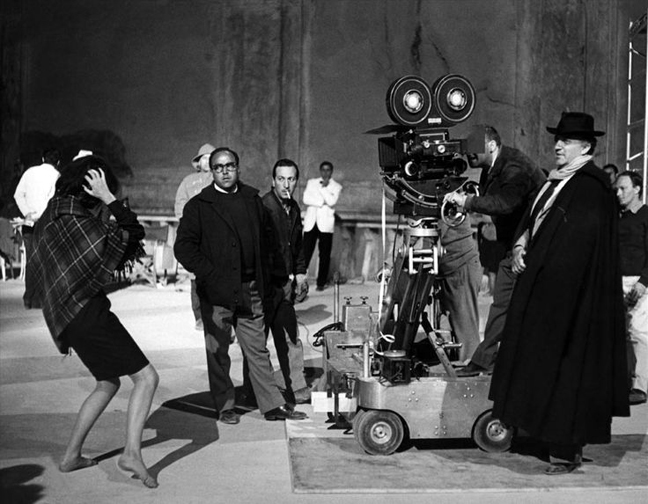 Fellini directs Barbara Steele at Cinecitta’ in 1962
Fellini directs Barbara Steele at Cinecitta’ in 1962
When I got back to New York, Vietnam was going on. I got a letter to report to the Draft Board, so I immediately joined the National Guard because there was no way I was going to Vietnam or getting drafted into the Army. My objection was completely political. What was going on in Vietnam was a disgrace. I didn’t want to have any part of it.
I got a job with ER Squibb and Sons, a drug company, as a sales guy, going around to the doctors, giving them samples and explaining to them why they should use a particular drug. I did very well financially.
In 1965, I got married to Cindy and I started going to NYU, to the School of Visual Arts, and taking film-making and directing courses. We didn’t want children immediately. We wanted to live. I was pretty straight. I went to the theater a lot, went to the ballet, and it was a great time.
*
3. ‘The Deviates’ (1970), Jerry Gross, and… Edward G. Robinson
I first met Lewis Jackson at the School of Visual Arts in New York. It was 1969 and I remember we both went up to Woodstock for the music festival.
We both wanted to make a movie. He had more experience than me, so we agreed he would write and direct the film and I would produce it. We put a little ad in the New York Times, and these two elderly guys in suits and ties with slight eastern European accents answered it. I don’t remember their names but they wanted to make a movie. Not just any movie either; they wanted to make a porno movie. They hadn’t done it before. They weren’t distributors, but they were interested in giving us money. They saw it as a chance for them to make money. They weren’t interested in the sex, in fact they didn’t even want to be on the set when we shot it.
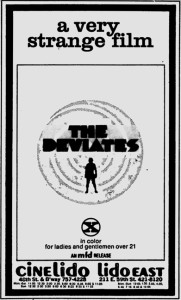 So they gave us around $5,000 and Lewis wrote The Deviates. It was a hardcore film but it had a plot too. It wasn’t wall-to-wall sex. I don’t remember who was in it. I recall one of the scenes featured a foot fetishist. We shot it cheaply using people’s apartments as the locations.
So they gave us around $5,000 and Lewis wrote The Deviates. It was a hardcore film but it had a plot too. It wasn’t wall-to-wall sex. I don’t remember who was in it. I recall one of the scenes featured a foot fetishist. We shot it cheaply using people’s apartments as the locations.
We made the film, we handed it over to the two old guys, we got paid – and that’s the last I heard of it.
After that, Lewis and I got a job with Cinemation Industries, a New York City-based film exploitation studio and distribution company owned and run by Jerry Gross. He picked up all the exploitation movies at the time, kung fu movies, things like that – though not porn films. We were hired to work on the sets because he liked what we did and how we did it. He just said “I want you to work with me.” But he never used us! He hired us, paid us, but we never did anything for him so we had plenty of free time.
I got to know an aspiring cinematographer, João Fernandes; I knew his girlfriend from one of the courses that I took. He turned me onto a fantasy/mystery Brazilian novel called ‘Oyster in the Wind.’ I liked it a lot and acquired the film rights to it.
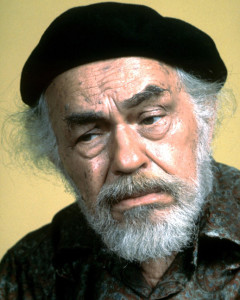 I wrote the screenplay and Lewis was going to direct it. We were trying to get it financed so we needed to get a star attached. There was a part for an old man, so I thought of the old school Hollywood actor, Edward G. Robinson.
I wrote the screenplay and Lewis was going to direct it. We were trying to get it financed so we needed to get a star attached. There was a part for an old man, so I thought of the old school Hollywood actor, Edward G. Robinson.
In those days there was an organization called ‘Celebrity Service’ that listed everybody’s home address in the movie business. This was before the internet and if you paid $25 a month you could get information from them. So I got Robinson’s home address and I sent him the screenplay. I was in California visiting my in-laws and he called the house. My mother-in-law said, “Barry, I don’t believe this, but it’s Edward G. Robinson on the phone!”
So I went over, just knocked on his door, and met with him. It was the strangest experience. Here I was sitting with these incredible impressionist paintings all over the living room, talking to him about this movie. That was surreal.
He said to me, “Barry, I really thank you for thinking about me but I’m seventy years old. I could never do this…”
The Oyster in the Wind project never came to fruition, though it was eventually made into a Brazilian film in 1997.
*
4. Pool Pah!
Back in New York, I put this band together with a guy named Michael Wright who was the sound man for the Foreigner. He worked for Sire Records and he lived a block away from me. We became really close friends.
I had no musical background but I’m not afraid of anything and I love music, so we put this group together. We didn’t think of using them for film work; our intention was just to create a rock and roll band.
They were called Pool-Pah.
The band’s name came from the Kurt Vonnegut book, ‘Cat’s Cradle’, which contained a language called Bacchanalism. Pool-Pah meant ‘wrath of God’ or ‘shit-storm’.
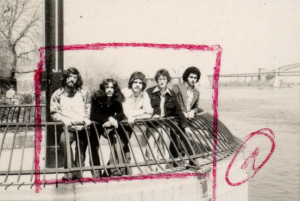 The band consisted of Lenny Colacino, the twins Bruce and Seth Handelman, Joe Ruggiere and Rick Stabile. Lenny was the lead vocalist, and the Hendlemans played guitars and horns.
The band consisted of Lenny Colacino, the twins Bruce and Seth Handelman, Joe Ruggiere and Rick Stabile. Lenny was the lead vocalist, and the Hendlemans played guitars and horns.
The music was written by band members, but Rupert Holmes also wrote a few songs. I met Rupert through Michael Wright. Rupert went on to become a hugely successful singer-songwriter and musician, working regularly with Barbra Streisand among many others. He had the number one hit single Escape (The Piña Colada Song) in 1979.
Pool-Pah got a lot of good press coverage and the future was looking bright for them. I was their manager.
*
5. ‘Forbidden Under The Censorship of the King’ (1972). Or ‘F.U.C.K.’ for short.
Apparently the guys who financed ‘The Deviates’ had made good money from it. One day in 1971, I got a phone call from them again.
I was working in a pharmacy, and they said, “We’d love it if you made another movie for us.” Apparently they’d been looking for Lewis but couldn’t find him. I think he was out in California and I couldn’t find him either, so in the end I said, “Okay, I’ll do it.” They didn’t give me any instructions; they just wanted another porno movie.
I wanted to make something a little different. I knew the film had to look like a normal porno movie, but every time the sex would start I wanted to portray something that would be straight out of the theater of the absurd. I wanted it to be surreal and zany.
The basic plot was a guy studying abnormal sexual behavior who he opens up a Post Office box and gets people to contact him with their weird sexual ideas, and then he gets involved with all sorts of insane things.
It would be called ‘Forbidden Under the Censorship of the King’. Or ‘F.U.C.K.’ for short.
I asked the backers for permission to use the foot fetishist scene from ‘The Deviates’ because I thought that would work well in this new film. Of course they gave it to me because they owned it.
My idea was to shoot the film as a hardcore porno – but then cut the hardcore sex out, and make it into a light, soft-core sex comedy. That was my vision: I wanted to end up with a seventy minute sex comedy.
I formed a production company called Lemming Productions… because Lemmings kill themselves. They go to the edge of a cliff and they all go over. I figured that was appropriate because we didn’t know what we were doing either. What were we doing? Just following the leader.
I set up a casting session; the hardcore film scene was a pretty closed community so that was easy to do. They all got paid $100 a day. That I do remember. Everybody got the same. I hired Herb Streicher, who would later become known as Harry Reems after Deep Throat came out.
I also came across Jamie Gillis. He was a little strange. There was an orgy scene at the end of the movie. To prepare for the scene he had to go down to the basement and get beaten up by two of the women before he could come up and perform.
Monica Rivers was Jamie’s partner in the rape scene. She lived on 72nd Street and it was her boyfriend, who was a film producer and theater owner, who found out about our film and told her to do it.
The flasher was a friend called Bob Livigne. He went to become a high school teacher after making his only film appearance here.
Perry Gewirtz came to audition for us too. He had appeared in Putney Swope (1969), and he couldn’t get a job. When I saw him coming in for our porno movie, I said, “What are you doing here?” I didn’t want him in a porno section of the movie because I respected him and I felt sorry for him. He wasn’t a good looking guy, not a typical Hollywood person, but he had a lot of talent. In the end, I hired him as a mortician preparing a body.
I hired João Fernandes who I knew from my attempt to make ‘Oyster in the Wind’. Through him I met Victor Petrashevic, who was a more experienced cameraman. Victor helped him a lot and was a big influence on him. They both had cameras and they just moved around filming the action.
Victor was a really big guy. Maybe two hundred and fifty pounds. But he was lovely to us and he really helped me because I’d never directed anything in my life. And his wife Helga was an editor, so she edited the movie. She was lovely.
I didn’t have many other crew members. Maybe a lighting and sound person. A couple of grips. The porno people got paid and no one else got any money, but they all got fed.
The opening scene was inside a movie theater in Brooklyn out in Canarsie. They didn’t have matinees, so I asked them if we could use the space. We used all of our friends as extras in the movie theater.
Then I wanted a scene with a transsexual. We interviewed three different people and found someone who was terrific. I mean a really sweet and lovely guy… a woman… I’m not sure what you call them. Anyway, just lovely.
Harry had to be seduced by this transsexual. He was fine with it. We filmed the scene at Kenny’s Castaways bar which used to be on East 84th street before they moved down to the Village. Pool-Pah played many shows there so we knew the owners well.
I wanted a sex scene with food too. My friend, who was also a producer on the film, was a guy named Greg Pardes. He was a chef so he was the craft service person on set. I got him to cover a woman with food for an orgy scene. He completely covered her with food. Deli stuff. Chicken and turkey. The scene consisted of Harry making a pig out of himself and then everybody joins in and the orgy starts.
I wanted a song like “Yummy, yummy, yummy, I got love in my tummy” to play behind another food scene. Rupert Holmes wrote and sang the song for the scene. He also wrote and sang a song for the mortician scene. Pool-Pah wrote the rest of the music in the film. The music was really good – the film had a great rock score. It was much better than any of the other music in porno films at the time.
We shot the film in our apartments and many scenes in Central Park. My wife and baby son appear in it as well.
I didn’t describe the sex in the script. I just let it happen. The exception was the orgy scene where I wanted Jamie and Harry to ejaculate at the same time so that I could animate the sperm cells.
‘Forbidden Under Censorship of the King’ is unique in that it features an animated co-star, Spencer the Sperm.
I always knew I wanted to use animation. I had a full script, and I knew exactly where the animation would go. This was unusual for any film at the time, let alone a sex film.
I had a couple of friends – Betsy Stang who was an artist/photographer, and Ted Timerick, who owned an animation studio. I told them what I wanted to do, and the two of them created the animation. These scenes were so original and different. I’ve never seen anything like them. The idea was to have the sperm cell come in and out every time there was sex on the screen where somebody would ejaculate. If I’d had more money we would have had more animation.
We told the press that the budget was about $50,000, but that was overstating it. You have to make everything sound good for the press. I’d be surprised if it was $30,000.
*
6. To Be (Explicit), Or Not To Be (Explicit)
To edit the movie, I’d go to Victor’s studio which was on Broadway at 55th street. Helga did most of the editing, but I was sitting over her directing her work. You have to do that or else it would be her movie. She was really great, though she would probably blush if she remembered editing this sex film.
As intended I took out all of the hard-core sex. Then I started showing the film to buyers. The trouble was that while I’d been editing it, Deep Throat had come out and Herb Streicher was no longer Herb Streicher. He was now Harry Reems. And here I am showing a Harry Reems movie… with no hardcore porno!
When I showed the non-porno version to the two guys who financed me, they flipped out: “Where are the fuck scenes? You have Harry Reems, so where are the fuck scenes? What are you doing here?” As a result they weren’t interested in releasing the movie, and neither was anyone else.
I just couldn’t get the film sold. So I called up Herb and I said, “Herb listen, I need you. We have to do some inserts. I need to put all the porno back in this again in order to get it out.”
He said, “You just cut out the porno, so can’t you just put it back in?!”
The trouble was that it wasn’t seamless. I needed some inserts.
It wasn’t easy however because of continuity problems. By now Herb had a much bigger mustache. So if you take a look at him walking in new scenes we shot in Central Park, you’ll see him hiding his mustache to cover it up.
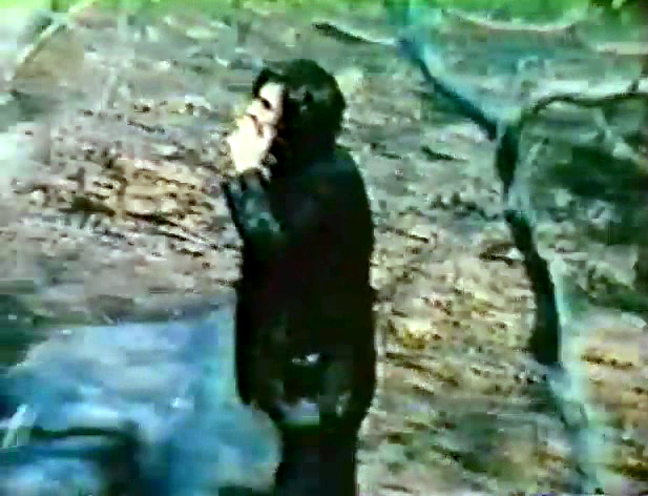 Harry Reems, covering up his bigger mustache in ‘The Flasher’…
Harry Reems, covering up his bigger mustache in ‘The Flasher’…
Then in the rape scene, I needed a shot of somebody’s bare ass and I didn’t have any one available, so I had to use mine… Unfortunately I have a scar on my right cheek so anyone who knew me intimately recognized me immediately.
When all of the porno was back in it again, I showed the film to a guy named Steve Singer. He loved it and thought that we could sell it as a non porno movie. He bought the movie from the two old men and he became the film’s producer. He sold the hardcore version to a company in California. They changed the name of the movie from ‘Forbidden Under Censorship of the King’ to ‘The Flasher’.
We never had a big premiere or anything like that.
From ‘Learning The Hard (Core) Way’, Cara Rogoff and Karl F. Cohen (1973):
They added a full musical track, animation… they were aiming for something like a Woody Allen movie, but with a lot more sex in it. What they turned out was a satirical, humorous movie with solid acting and very good photography.
I had nothing to do with the film after that. Sadly it didn’t do great in the porno market because people who go to see a porno movie don’t want to laugh. They want to get an erection and they want to be stimulated. They don’t want to laugh. So the movie bombed as hardcore porno.
‘Forbidden Under Censorship of the King’, opened the 2nd New York Erotic Film Festival in December 1972 – and won an award for the best soundtrack.
*
7. Spend an Evening with ‘The Flasher’: The Broadway show
Steve Singer suggested that we try to combine the non-porno version and the music. He wanted us to create something different that might get people interested in the softcore film version so we could sell the movie. His idea was to put together some kind of event to publicize the movie.
I came up with the concept of ‘Spend an Evening with The Flasher’ which was based on a vaudeville show. It was to be a one-night, one-time-only first X-rated concert. It had an MC who was The Flasher. He would come out in a long blue coat and run the proceedings.
I wanted to incorporate all sorts of entertainment. I wanted Pool-Pah onstage playing the songs from the movie, and then we’d show some film clips, some vaudeville acts and have a stripper. I put the whole thing together.
Then I started going around looking for a theater. I looked at a few but when I walked into the Beacon Theater it took my breath away. I thought, “Oh my God!”
The place was magnificent but it was really run down. They had frescoes on the wall that were so dirty you couldn’t see them. The place was filthy; you walked down the aisle and your feet stuck to the floor. Their organ was badly in need of repair. It was this gigantic movie house but it was being used to show crappy movies. It only had twenty or thirty people in it.
We rented it from the people who also owned the Beacon Hotel. It didn’t cost a lot because they weren’t making any money from it. They had a three part movable stage that was still in operation which was perfect for us.
We really didn’t have any money to spend on the production. We wanted to hire someone to choreograph the show but that would have cost too much so we just did it ourselves.
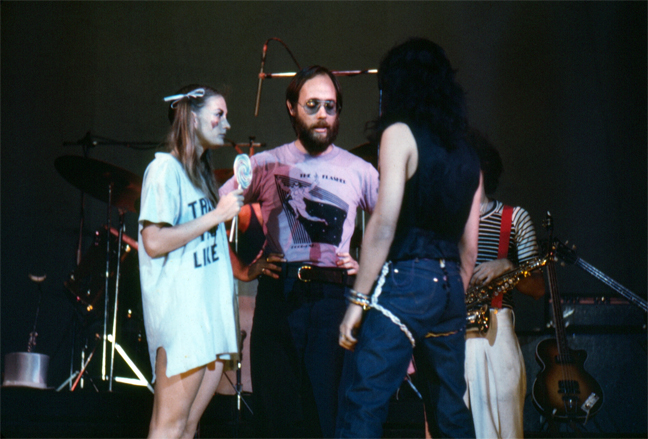 Barry Kerr at rehearsals at the Beacon Theater for ‘The Flasher’
Barry Kerr at rehearsals at the Beacon Theater for ‘The Flasher’
For the stage show, the role of The Flasher was played by Robert ‘Bo’ Golden who had been part of the original Broadway production of ‘Hair’ and the musical, ‘Tommy’. Golden did the choreography as well.
We did have a publicist and the show was covered everywhere. The New York Times, Variety, the Post, every magazine and newspaper featured articles about the show. I was in Earl Wilson’s column and interviewed on radio stations. We then plastered New York City with posters of the Flasher flying through space advertising the first X-rated concert.
Two weeks before the show, Barry Kerr announced that the show had been edited to comply with the recent Supreme Court ruling on obscenity. Minors were prohibited from ‘New York’s first X-rated concert’ – but in truth it was all good publicity for the event.
In the weeks leading up to the show, we staged some of the scenes from the film – such as covering the girl with food and serving her to the press. We told the press about it in advance and they turned out in force to write stories about us. It was featured in all the TV news programs as well… ABC, CBS, and others.
The girl covered in food that day was Laura Corn. She has gone on to be a best-selling author of erotica and sex books.
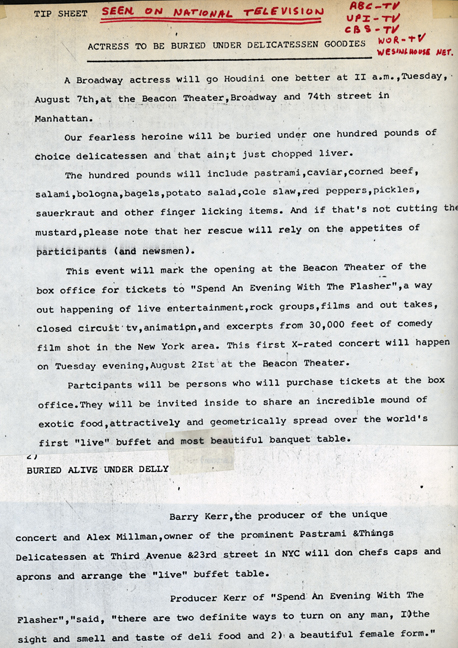 Press release relating the actress-covered-in-food media stunt
Press release relating the actress-covered-in-food media stunt
It was a big undertaking but by mid August 1973, we were ready to stage the show.
‘Spend an Evening with the Flasher’ – described as a “multi-media rock concert headlined by Pool-Pah, with closed circuit television, computerized slides and excerpts from movies” took place at the Beacon Theater on August 21st at 8pm.
The show was sold out. It was totally sold out. We had some big celebrities there as well.
From ‘The Flasher’, Sir magazine by Lisa Hoffman (May 1974)
It was attended not only by half of New York City’s Fourth Estate, but also lured a curious crowd of about 1,500 paying customers – among them Carroll Baker, Andy Warhol, Eric Emerson, drag queens, groupies, glitter freaks, including three shaggy dogs with rhinestone collars, belonging to three men without rhinestone collars.
We had marshmallow girls that came down the aisle giving ice cream out to people. One of them was my wife at the time.
Geri Miller, dancer, groupie, actress, and part of Andy Warhol’s crowd (known for Trash (1970) and Flesh (1968)) was one of the featured performers.
The audience and critical reaction was positive.
From ‘An Evening With The Flasher’, Cash Box (September 1973):
‘An Evening With the Flasher’ is a pioneering effort to answer contemporary audiences’ needs for entertainment that provokes thought rather than merely raising giggles – or anything else for that matter.
All the members of the group proved highly capable performers who managed to overcome technical difficulties to hold the evening together. With considerable tightening up, the show could be a winner on the college circuit.
From ‘The Flasher’, Sir magazine by Lisa Hoffman (May 1974)
The highlight of the evening is definitely Geri Miller of Andy Warhol fame. She sings and does a strip and – as a fringe benefit for the audience – starts propelling her pasties in two different directions. Women’s Lib would love her: look, Ma, no bra!
Unfortunately the lack of money meant that the actual show wasn’t as good as the publicity. I had envisaged taking the show on the road to colleges but I never got the idea off the ground.
By that stage Pool Pah had been together a couple of years but they hadn’t played many concerts outside of the bar circuit. They’d couldn’t break in. They needed a record so we recorded the soundtrack to ‘The Flasher’. Michael Wright, with whom I’d set up the group, produced it. We sold it to this record label called Greene Bottle Records to release. Steve Singer hired two guys to promote it.
For a moment it looked like it was going to be a hit record. It was on the Billboard charts pretty quickly; it had a ‘bullet’ on Billboard, which means it was selling particularly fast.
The problem was that we never told Green Bottle management that the soundtrack was from a porno movie. When they found out they dropped it. They wouldn’t publicize it… so from then on it bombed.
And Pool-Pah was history.
*
8. Bruce Lee… and the rebirth of the Beacon Theater
By this point I was tired of the whole ‘Flasher’ thing, but I had fallen in love with the Beacon Theater. I talked Steve Singer into buying a lease for it. My experience with ‘The Flasher’ had convinced me it should be converted into a live entertainment venue. The place was acoustically perfect. You could be up on the second balcony and hear the stage perfectly. It was phenomenal. My idea was to make it into a rock and roll place, like the Academy of Music on 14th street.
First we needed to get the money to fix the place up. I was a Bruce Lee fan, and I knew that Warner Bros. owned all of the Bruce Lee movies including ‘Enter the Dragon’, so I made an appointment to talk to a vice president at Warner Bros. I explained to him that we had a twenty-five hundred seat auditorium, and that I had an idea that could make them a lot of money. For the idea I wanted a 2 week exclusive for the theater.
I told them that they owned all three Bruce Lee movies and that Bruce Lee was now dead. I explained that if they played all three Bruce Lee movies together at the Beacon, I would put on karate and kung fu exhibitions in between the movies and create a Bruce Lee Festival. Next day I get a phone call and he says, “Okay, you can have an exclusive for a week, not two weeks, just one week.”
Needless to say Warner Bros. made a lot of money taking the idea worldwide.
I hired these kids from the Bronx who were martial arts people. They were friends with the drummer of Pool-Pah. We sold the theater out for a week. We made so much money that it paid for the renovation of the theater. We went up and fixed the filigree. I got the Metropolitan Museum to clean up the frescoes. I got the Organ Society of New York to fix up the organ.
That’s how we really converted the Beacon Theater into a live entertainment place.
It lasted until Robert Stigwood got involved and they put on Sgt. Pepper’s Lonely Hearts Club Band on the Road.
It opened at the Beacon on November 17, 1974 and ran for a total of 66 performances. Sadly the theater got dirty and unpleasant and I don’t really want to go into it. So I left. It broke my heart because this was everything I ever wanted in my life.
There’s a disease called pericarditis, which is an inflammation of the lining around the heart. I ended up getting pericarditis after the Beacon. I was bedridden for six months. It was like I had a broken heart after the Beacon. Literally, that’s what happened. I was heartbroken.
The Beacon Theater went through several different hands until the Radio City Music Hall people took it over. That’s who owns it now. They did a great job. It’s eventually become what I wanted it to be. But for years I couldn’t go near it.
*
9. Aftermath
After the Beacon Theater experience, a friend of mine said to me, “Barry, you have a license. Buy a drug store. Go do something where you can make money and support your family.”
I was married, I had a child but at that point I wasn’t working. I said to him, “How the hell am I going to buy a drug store?” and he said to me, “I’ll give you the money.” He was a major real estate broker in New York. He ended up buying this drug store for me. I paid him back. It goes back to my father who made me go medical school, it saved my ass.
It was called Murray Hill Chemists. It was on 37th and 3rd. It was a small drug store, which doesn’t exist anymore because of all the Duane Reade stores that are out there now. It was a service-oriented store. It was very, very profitable. I ran it for many years.
After that I moved up to Woodstock, where I started teaching teens how to make movies using video and organized a film festival called ‘Reel Teens’. It became the largest teen film festival in the world. This was long before any other film festivals had a student section. Our mission was to get people to know that teens are making films that are incredible. After ten years of doing that, every film festival now has student films. It didn’t exist when we started. My mission was complete.
I occasionally show ‘The Flasher’ to friends. I remember showing it about ten years after it came out. I had a lot of new friends and people knew about my background – but they had never seen the film. So I rented a screening room and invited people that I knew – including my mother and father and my sister and brother-in-law. When they saw the insert of my tush, they all knew that it was me! I didn’t tell them in advance but they knew.
My father had a very distinctive laugh. To hear him laugh in the screening room did a lot for my heart. It made me feel good. That was nice.
*
‘The Flasher’ (1972), aka ‘Forbidden Under The Censorship of Kings’ has been unreleased on DVD until recently.
Now the XXX version is available on DVD for $29.95 from Stoll Road Films, PO Box 1246, Woodstock, NY 12498. Please note: you must be 18 years old or older to order the DVD.
There are also five sealed, never been played, soundtrack albums (vinyl) available for $100 each.
Only check or money order will be accepted
*
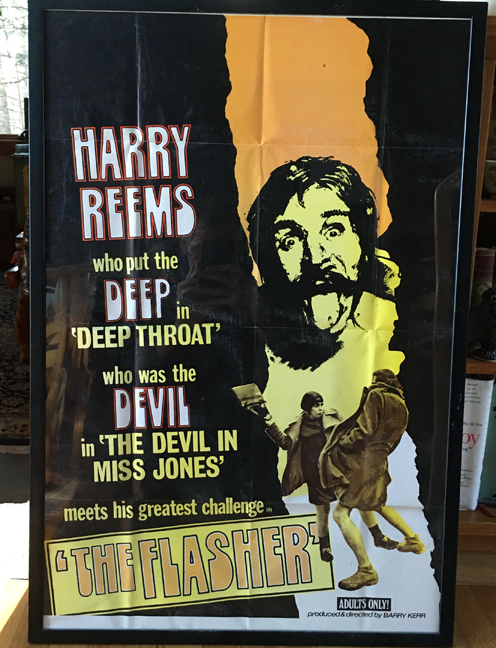
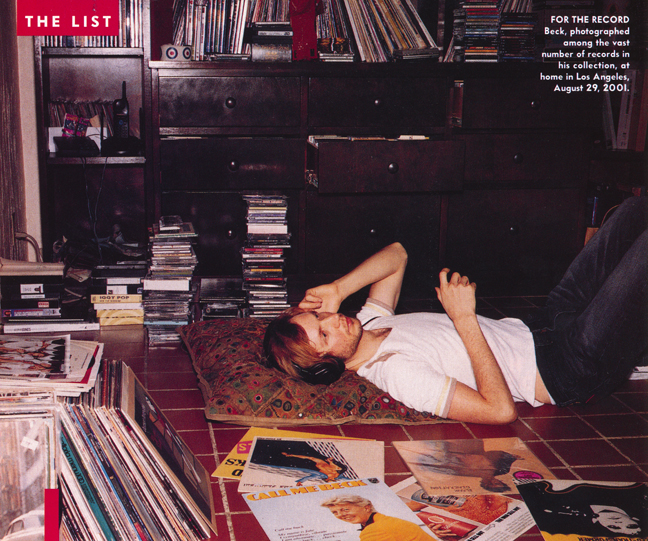
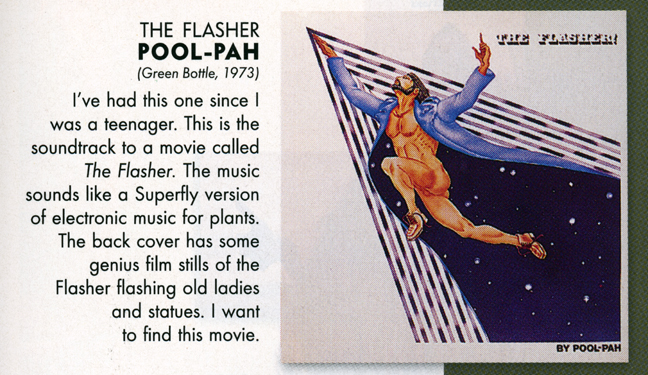
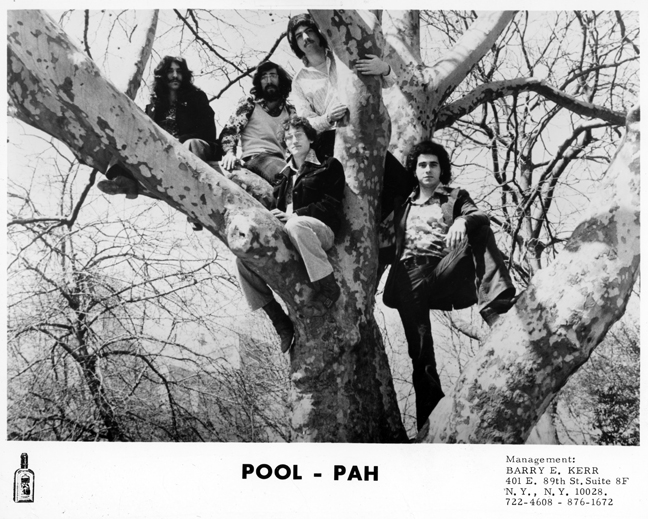
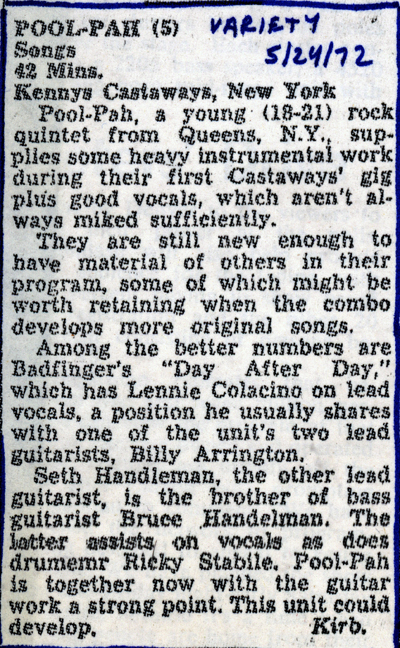
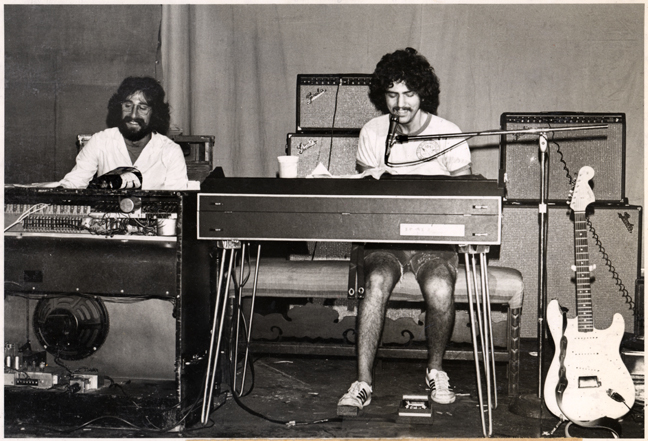
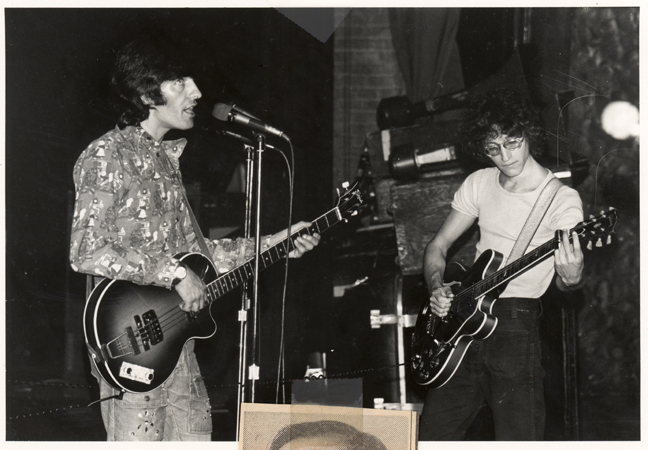
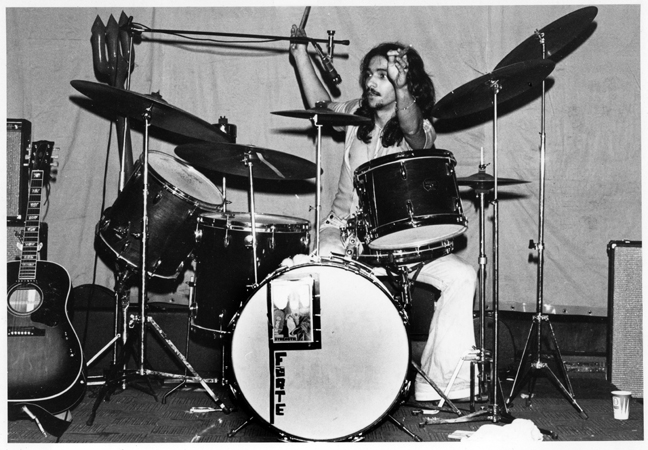
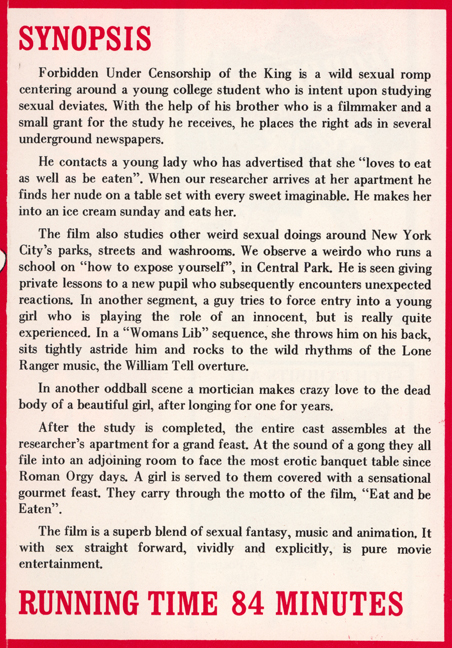
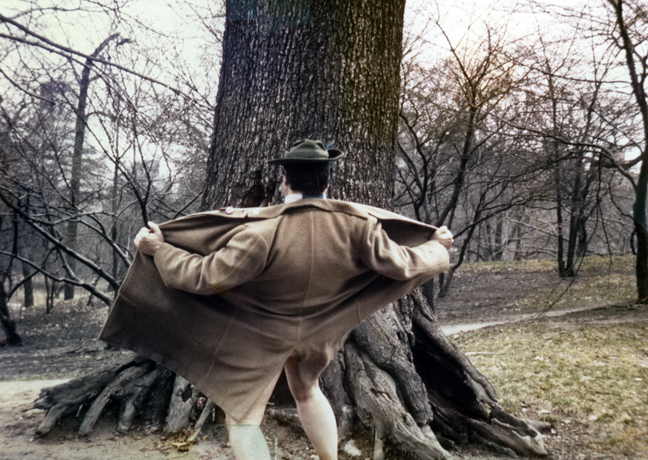
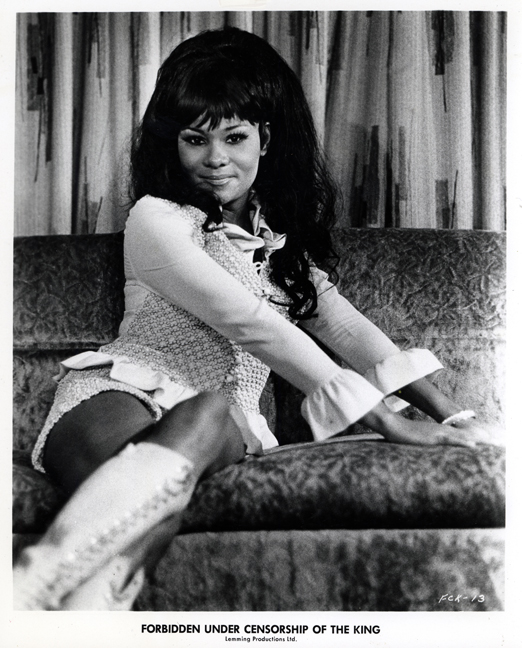
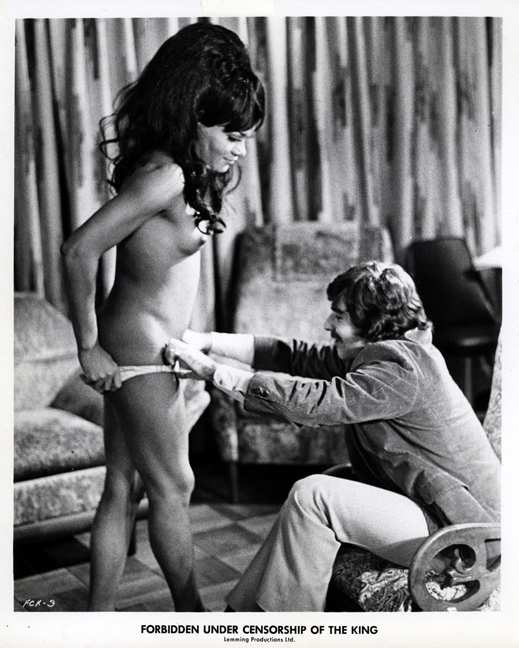
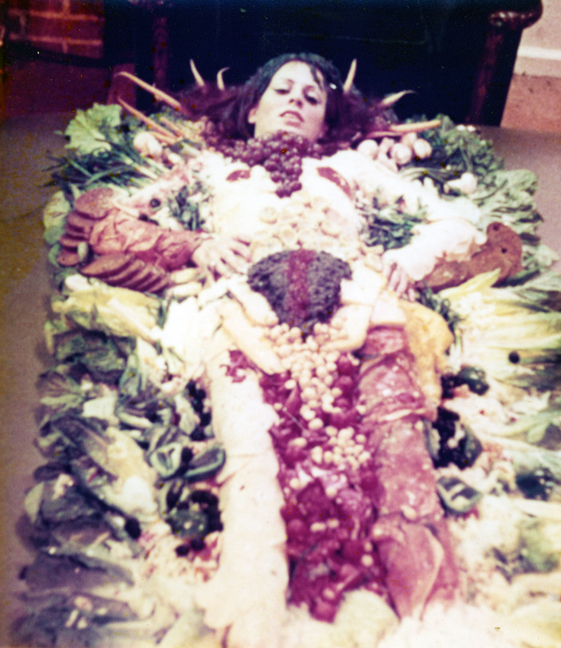
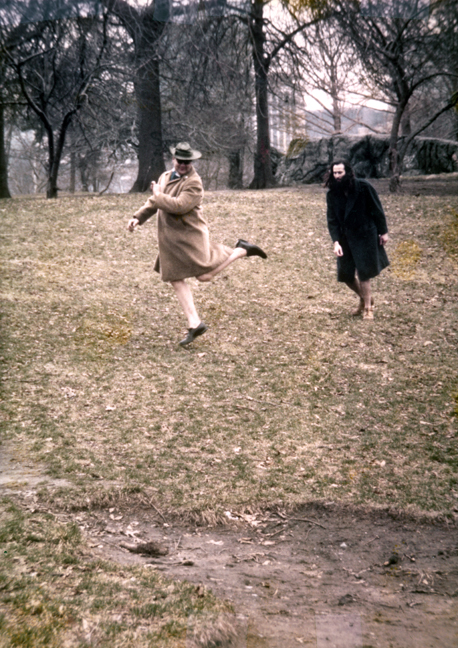
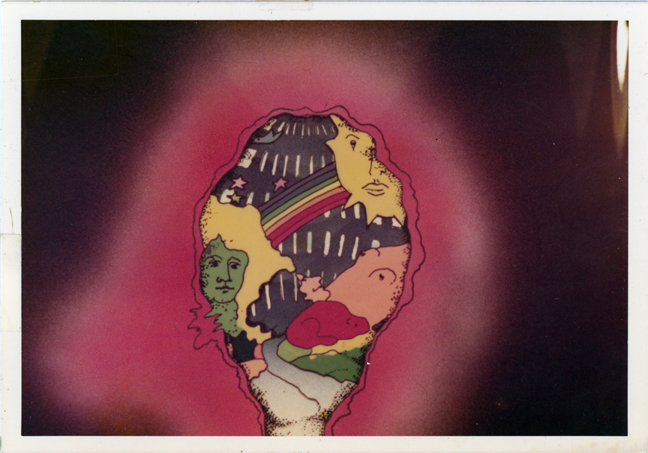
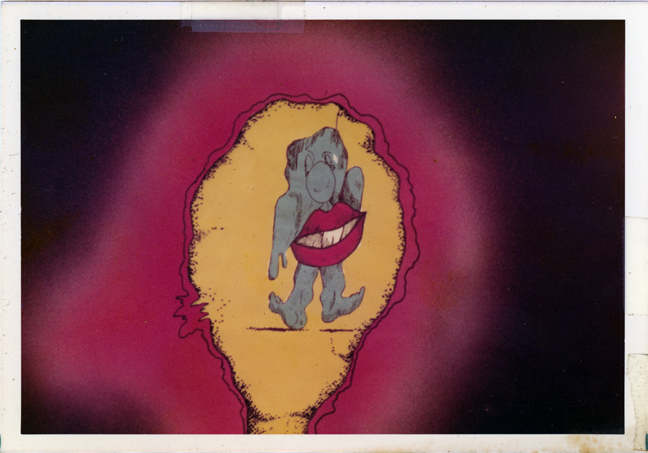
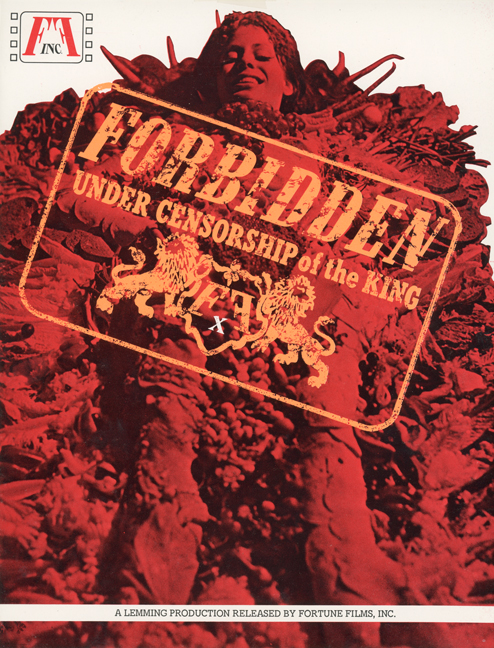
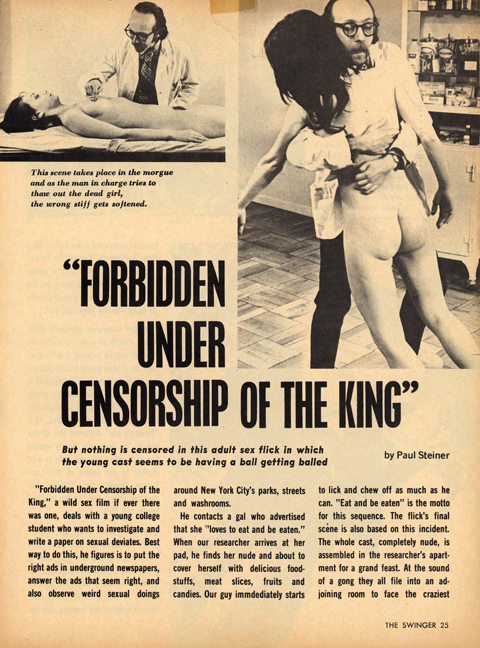
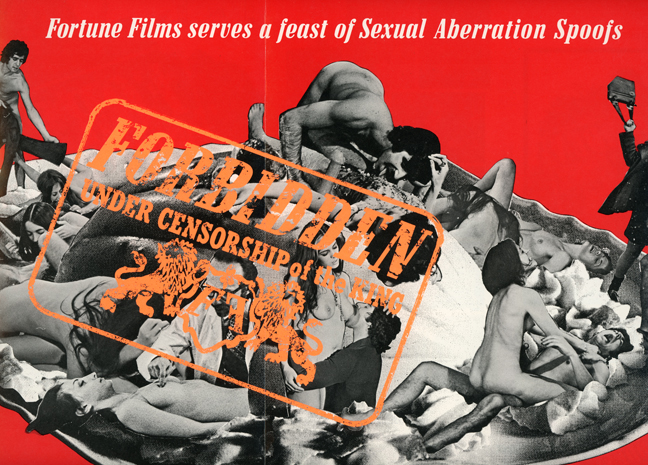
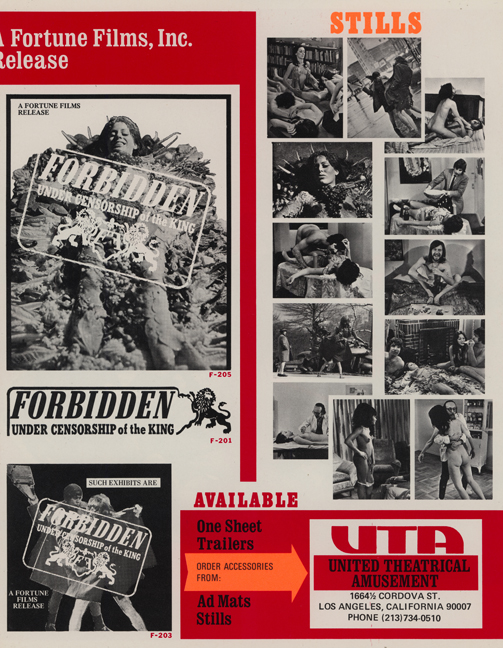
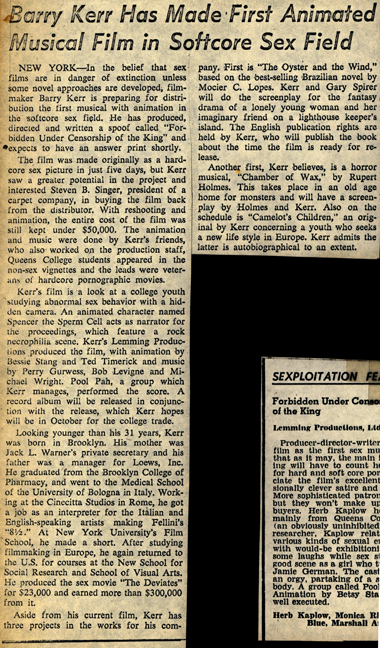
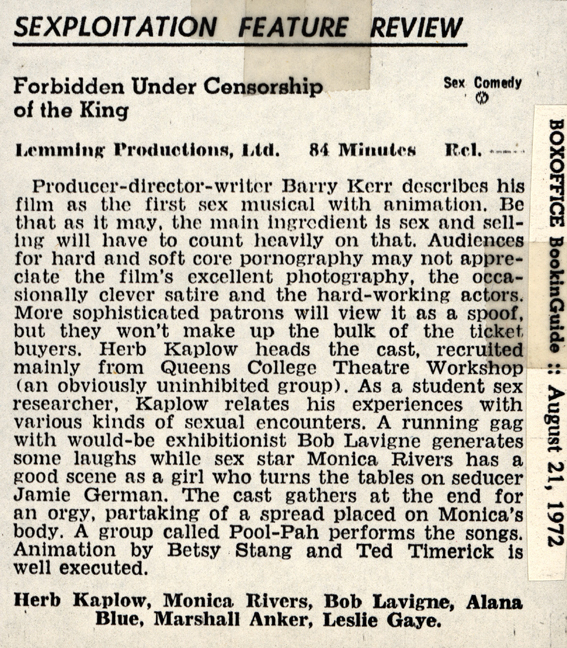
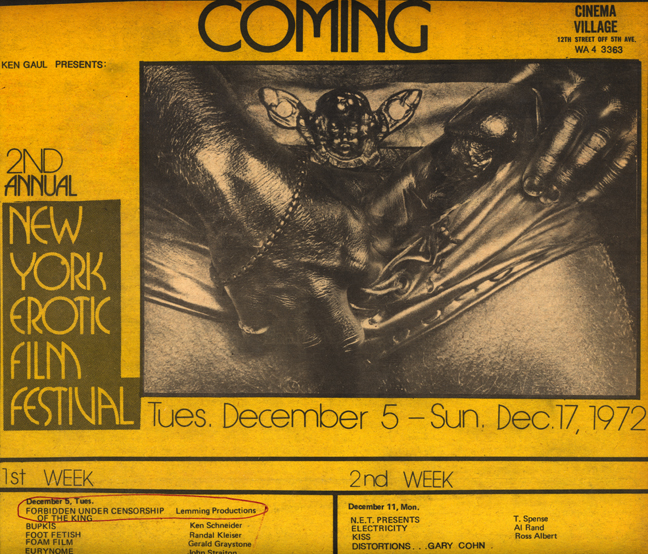
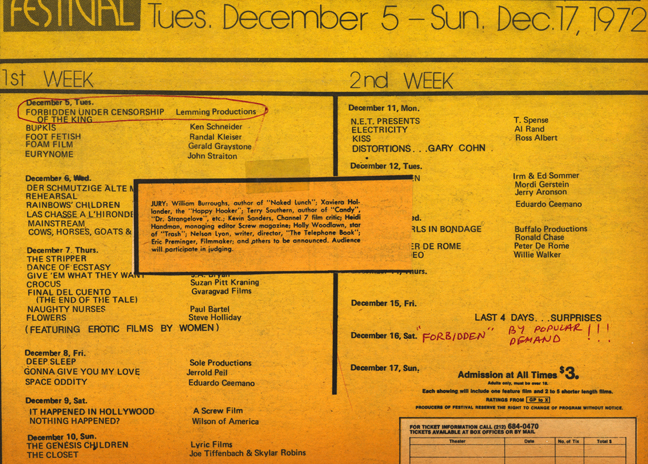
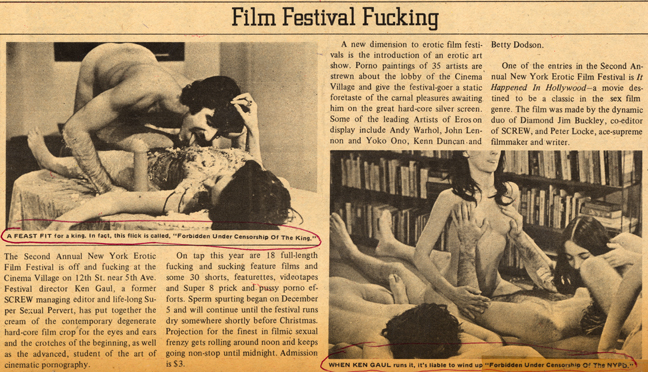
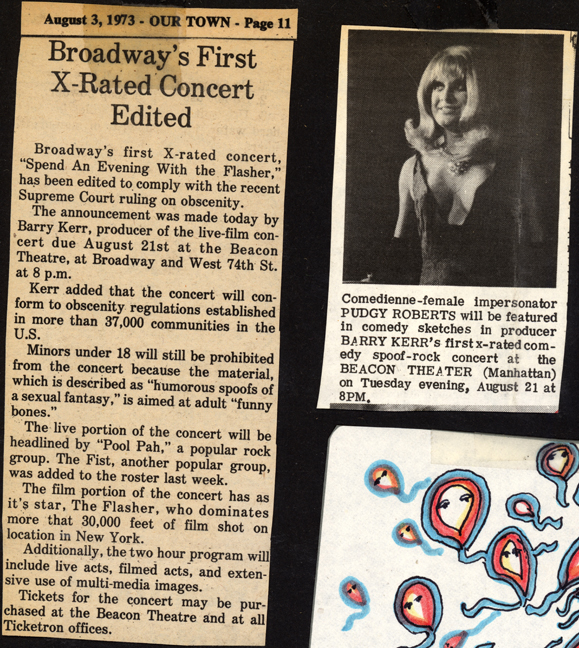
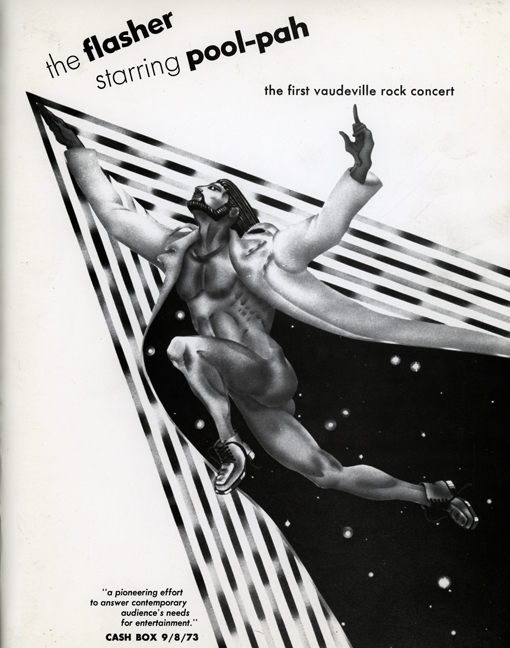
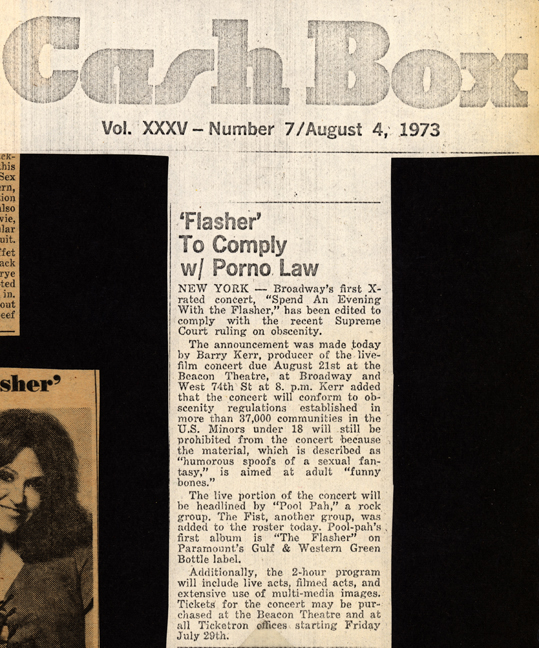
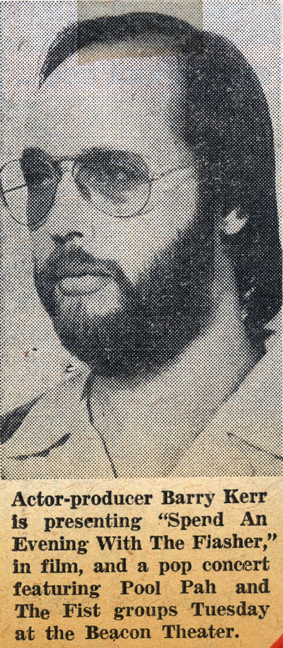
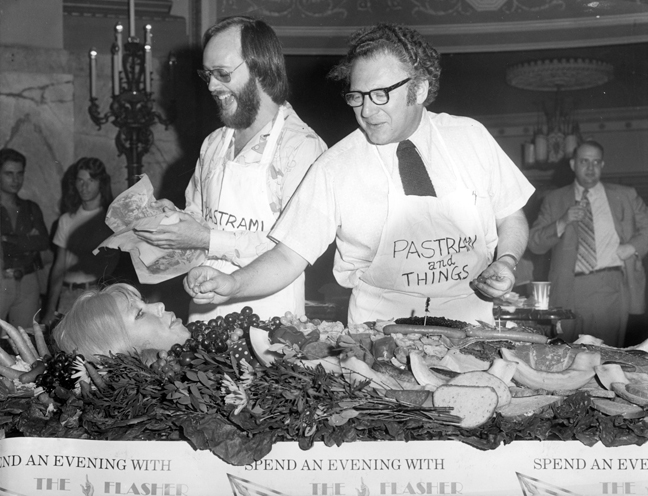
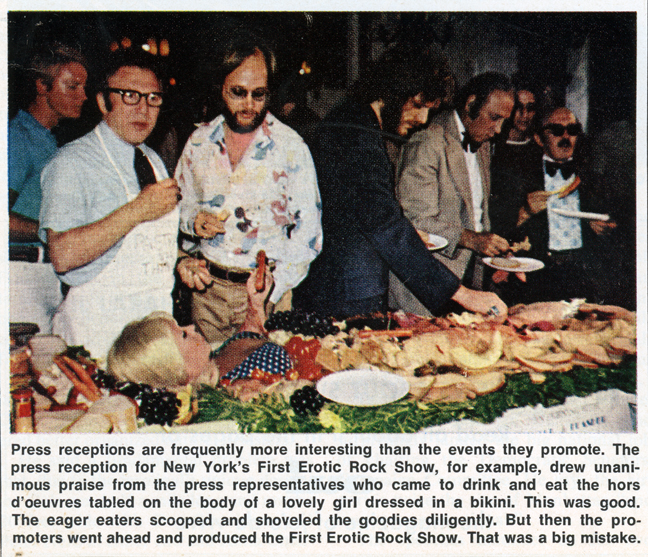
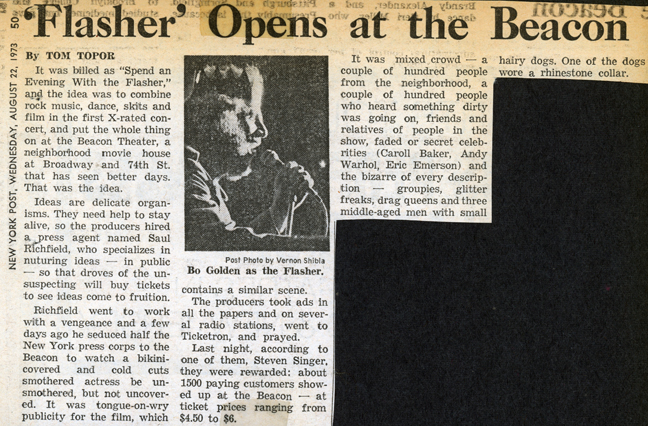
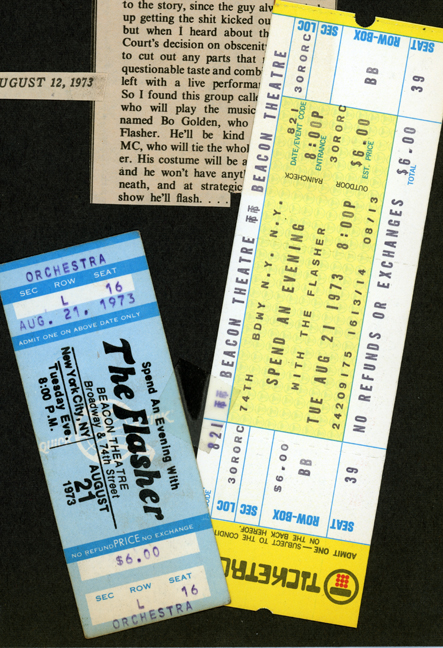
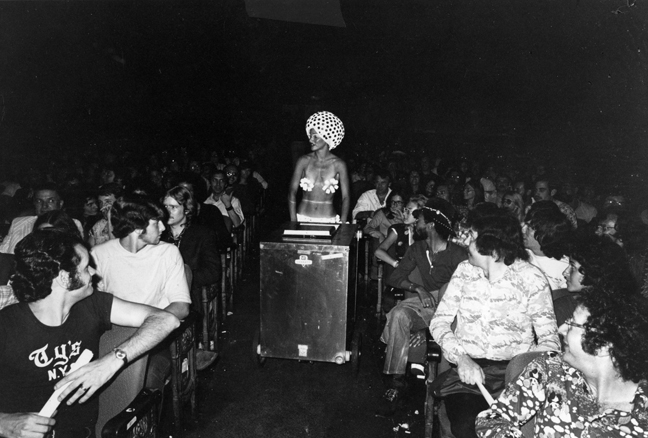
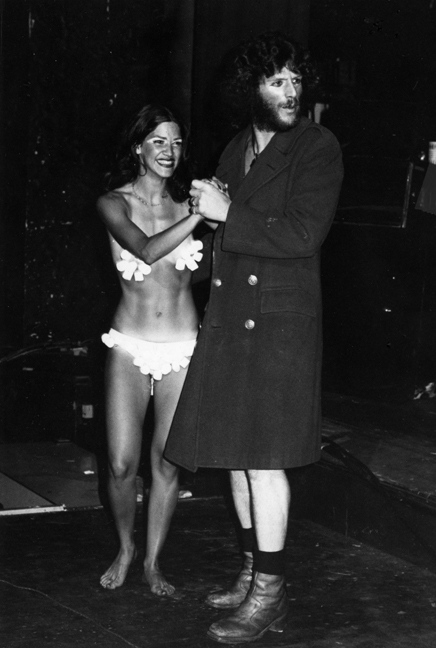
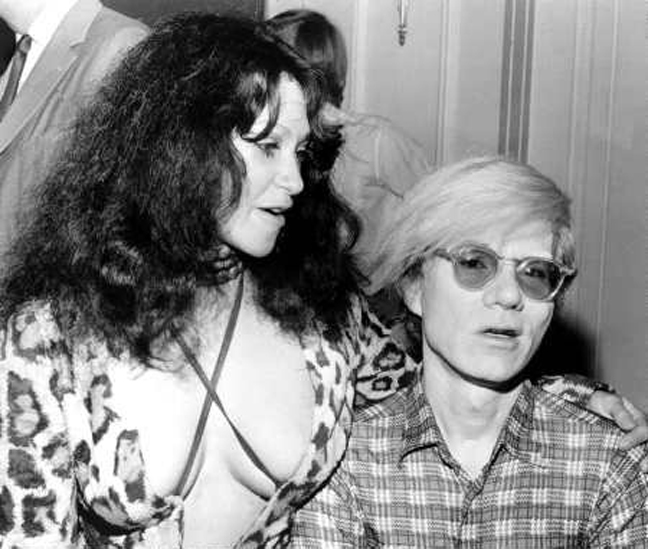
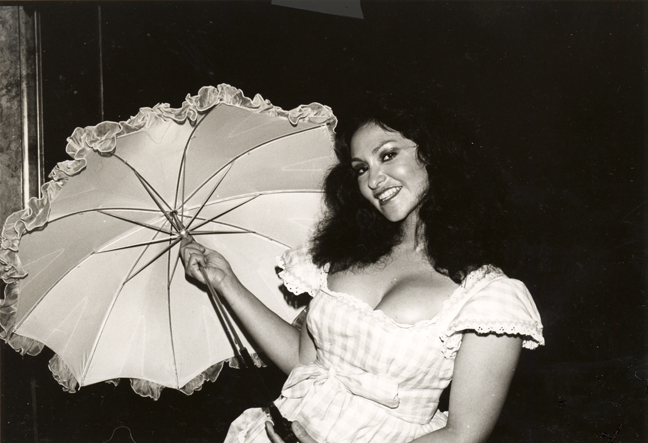
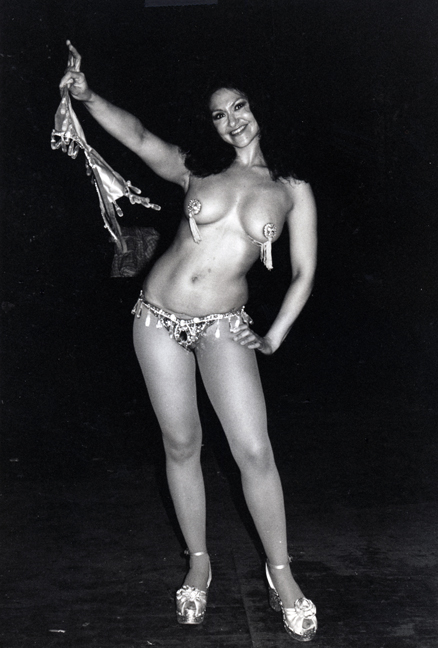
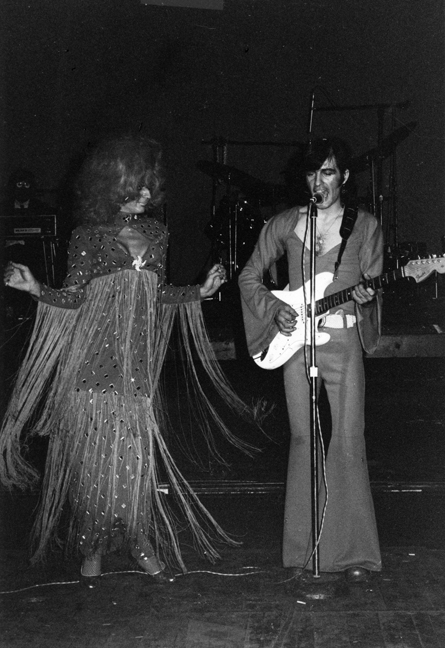
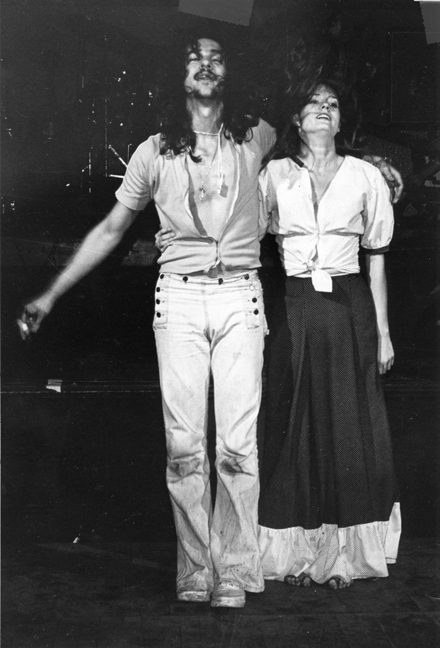
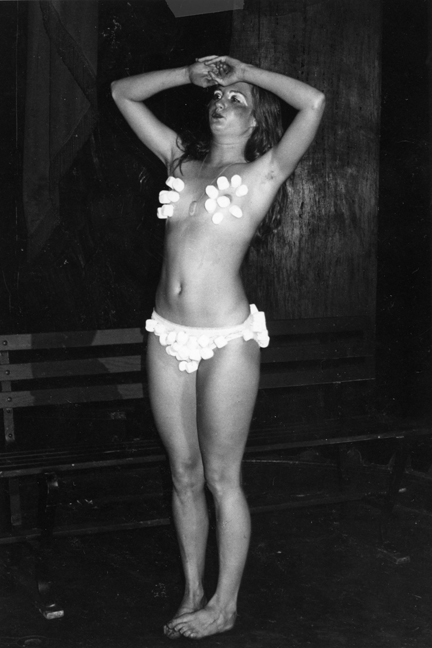
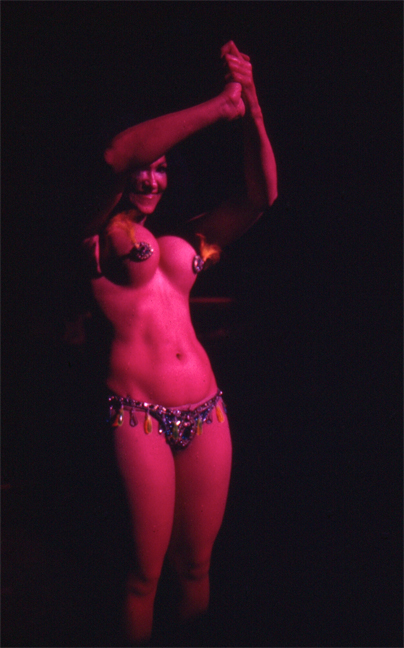
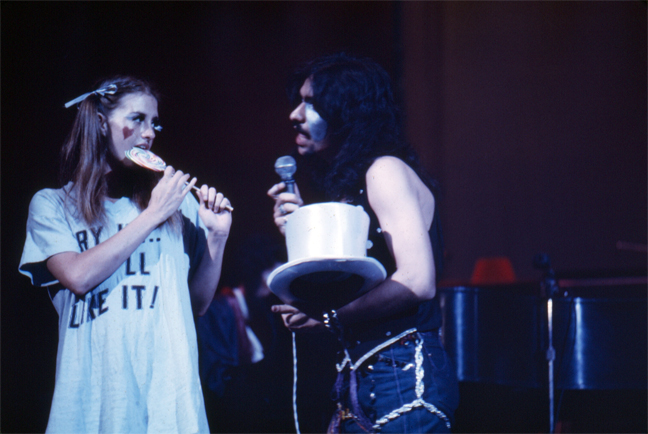
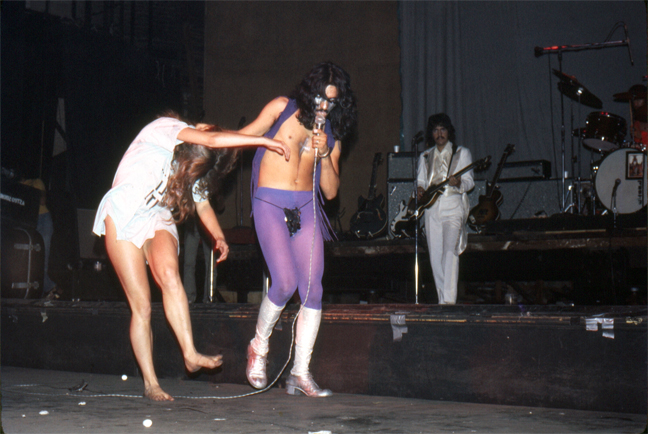
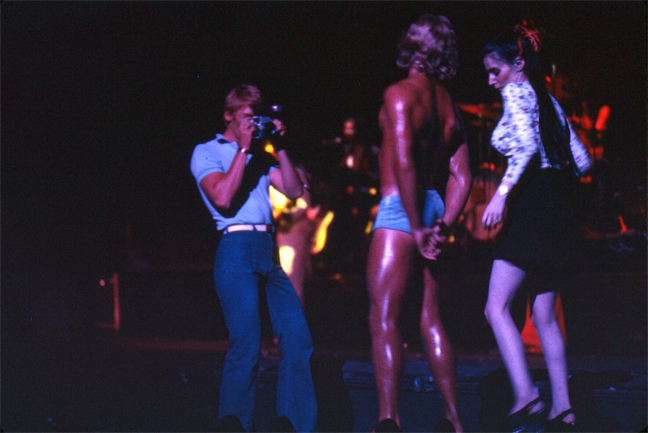
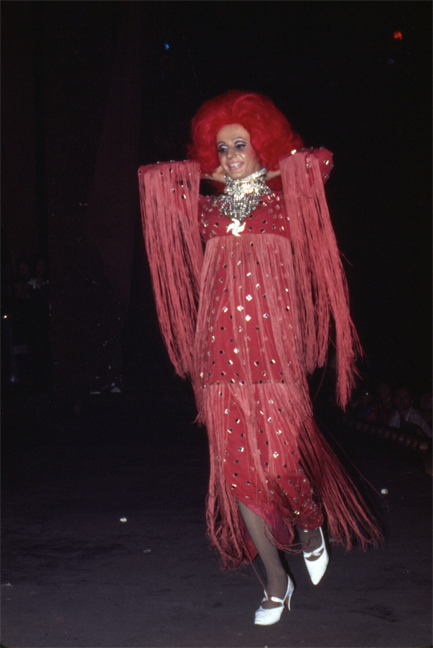
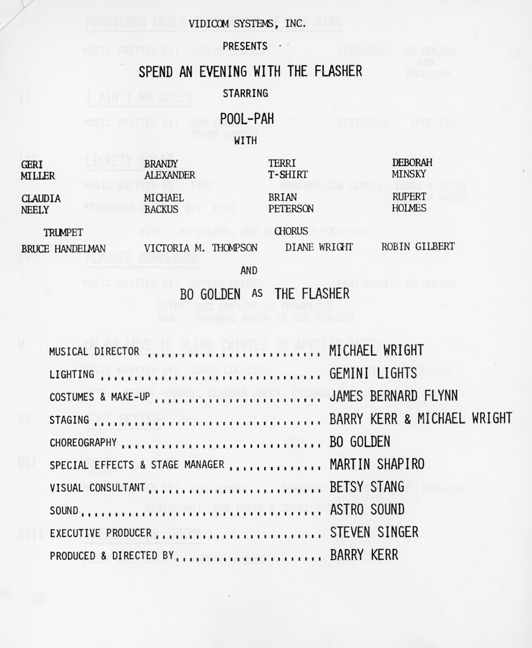
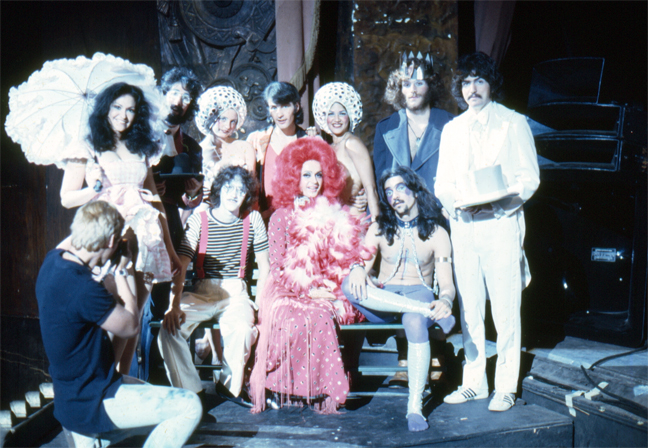
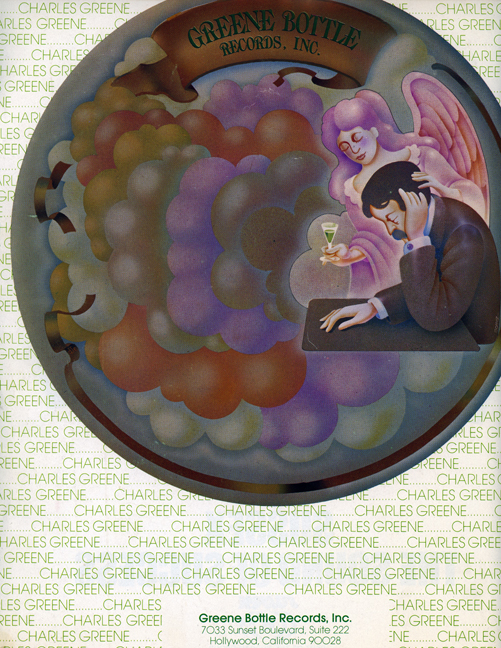
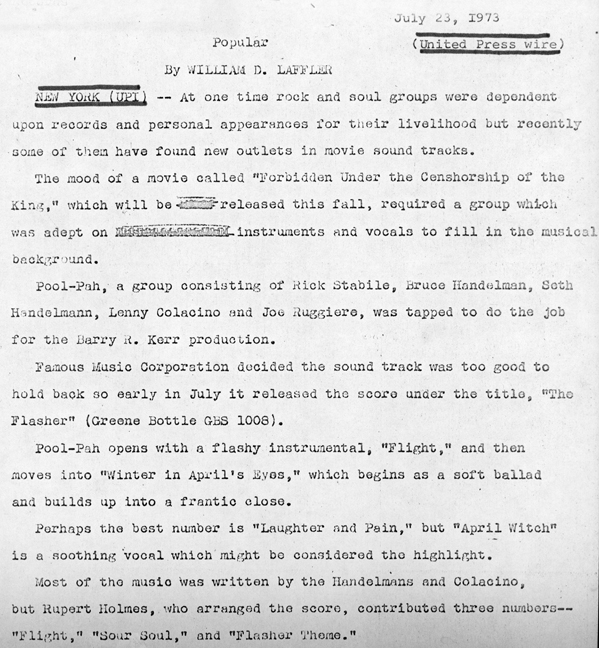
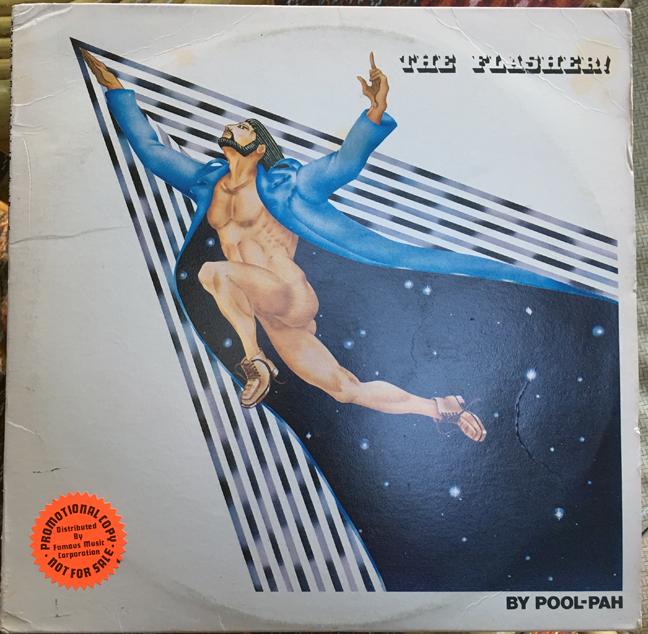
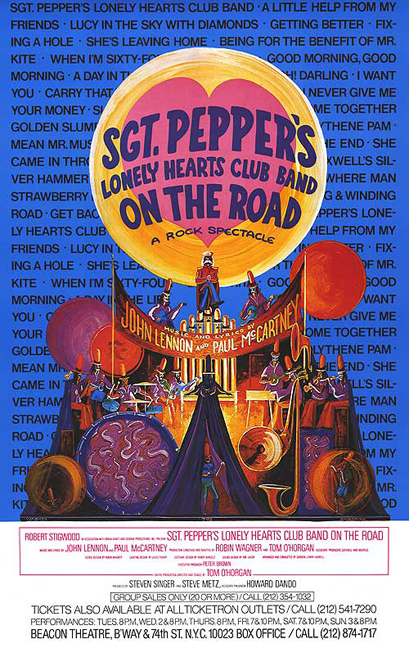
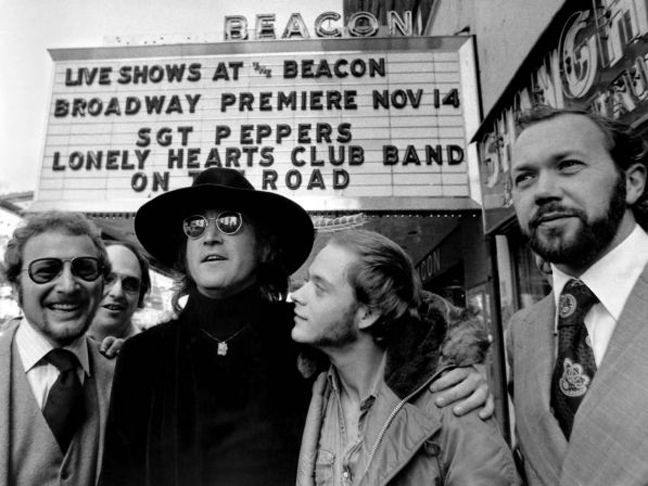
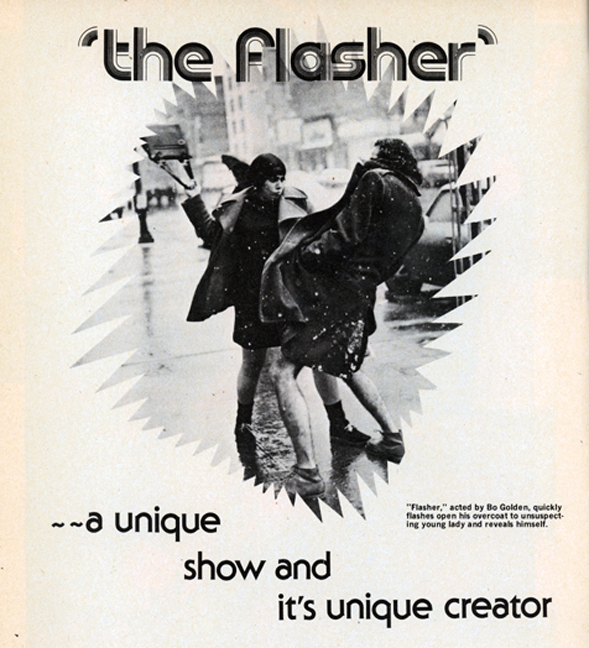

Great piece….!!!!!!!! I love hearing about the hidden history behind the adult industry of the 1970s. It was so pervasive in terms of being part of mainstream culture and this story is only being told now through this magnificent site.
Amazing job.
The Beacon is my favorite theater and I had no idea of its history in terms of The Flasher. Amazing array of media collected as well…… how do you guys do it?????? I never thought we’d see so many artifacts from this period, but you keeping on digging up treasure after treasure.
Thanks to Barry for sharing his memories!
And how about a Pool-Pah reunion show / Flasher screening…? C’mon – you know it would be great!
Good read.
Rupert Holmes.
For all you who wish you were young again, just think of how many times you would have to hear The Pina Colada Song. No thanks.
If it’s Sunday, it must be The Rialto Report! Great article!
amazing research. i’ve had the pool pah record for a while and always thought it was the soundtrack to a fictional film because there was no trace of it anywhere (nor could i find anyone that even knew it existed)- except the rialto report.
thanks for this
I always wondered about this film….. good to see it remembered in such a colorful way. Another winning report.
As an appropriately demented chef, I created a “Living Deli Platter” on (and in) Crystal Lake for Herschel Savage to dine on (and in) during the making of 1982’s “Fantasy Follies” and “Fantasy Follies: The More Than Equal Sequel.” And I remember inserting a dozen olives into the lovely Lake, but only extracting eleven., before presenting her to Master Savage.
Don’t forget Mr Margold’s character chef wiener with the unsung sweetheart Frankie Leigh, great scene. Also liked Margold has a Judge with Sunny Mckay
Amazing history.
Ticketron? What the fuck happened to Ticketron?
Thanks for this entertaining read about 70s New York – a great time and place.
And congratulations to Mr Kerr for his role in the revitalization of the Beacon: New York’s finest theater.
The Flasher and the Beacon – what a legacy!
More remarkable reporting. This is mandatory reading every Sunday. Thank you.
Amazing Barry! What a story.
As member of the band on the soundtrack album, I do get a kick out of pulling out the album and telling the tales to my grown up children. Goof times. Good music, and tha band and songwriting were pretty good too.
Excellent Article!
Is Monica Rivers still alive? One of the original redheads in the business
I thought the Flasher film was a myth, thank you for making this.
My mind has been blown! Thanks so much for your meticulous research. I dont know how you came across these photos but I’m grateful. I was the singer/ bassist and composer in Pool-Pah. I had long ago forgotten much about the two tumultuous years described here. Because of this article I was able to enjoy reconnecting with my former bandmates. I’m a lucky fellow.
Lenie Colacino
Thanks for this amazing article! I tried writing to Stoll Road Films recently, but my letter was marked “return to sender.” Would you have any update regarding purchasing this film on DVD? Thank you.
We understand that sadly Barry Kerr passed away recently, and we have no knowledge of the status of his film company.